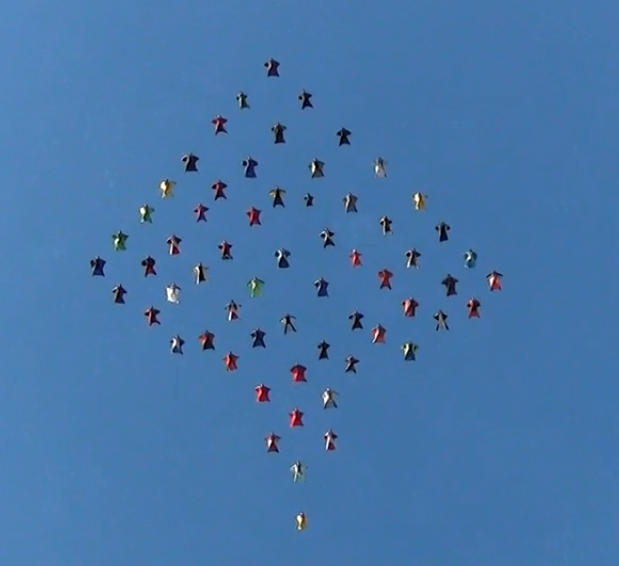Andy9o8 3
billvon 3,173
>is available for swimming pools; and that's good for America.
Which is why the liberals hate the idea. They want all that water to be wasted in glaciers and sea ice. Brainless idiots.
Silly me. I should have written, "increasing temperature from -40 to -35 will result in melting of the ice and will decrease the amount of precipitation because hot air holds less moisture than cold air.
I also should have stated that water vapor is not a greenhouse gas. My bad.
When Chris Matthews was arguing that the blizzards of this last winter were evidence of global warming, I should not have defended the reasoning. Instead I should have said, "yeah! It doesn't snow more with a temperature increase! Alarmist nutsos."
Thanks for your cogent critique. Why, you pointed to specific errors instead of a general ad hominem.
Good stuff.
My wife is hotter than your wife.
Amazon 7
I seem to remember learning that sea ice will melt when the temperature goes above 28 degrees F. When the average temperatures in an area rise above that.... ice melts and the higher the average temps.. the faster its melting. Lose all that white.. and it warms up the water even more....more ice melts.
Move along there is nothing to see here.. the ice is not really melting........
mmmmmmmmmmmkkkkkk I am convinced
kallend 2,230
nsidc.org/data/seaice_index/images/daily_images/N_stdev_timeseries.png
Meanwhile, a pole away:
Measurements from the Grace satellites confirm that Antarctica is losing mass. Isabella Velicogna of JPL and the University of California, Irvine, uses Grace data to weigh the Antarctic ice sheet from space. Her work shows that the ice sheet is not only losing mass, but it is losing mass at an accelerating rate. "The important message is that it is not a linear trend. A linear trend means you have the same mass loss every year. The fact that it’s above linear, this is the important idea, that ice loss is increasing with time," she says. And she points out that it isn’t just the Grace data that show accelerating loss; the radar data do, too. "It isn't just one type of measurement. It's a series of independent measurements that are giving the same results, which makes it more robust." - NASA
The only sure way to survive a canopy collision is not to have one.
turtlespeed 226
Quote>So the less ice there is locked up in glaciers, the more liquid water
>is available for swimming pools; and that's good for America.
Which is why the liberals hate the idea. They want all that water to be wasted in glaciers and sea ice. Brainless idiots.
Did you just give yourself a PA?
BTR #1 / OTB^5 Official #2 / Hellfish #408 / VSCR #108/Tortuga/Orfun
that for a region that USED to be completely covered in sea ice all year and now its dissappearing and ice free for the summer months is somehow NOT an indication of higher temperatures.
Right. Forget the science - it might not match what you want! Foreclose the possibility that an increase in snow means an increase in ice and a decrease means a decrease. Nope. Just as much as before only it's all melting.
Mind trick? Isn't that what they say about evolution? Jeanne - check out the science. it doesn't explain everything and leaves a lot of questions. But it does provide some answers.
[Reply]I seem to remember learning that sea ice will melt when the temperature goes above 28 degrees F. When the average temperatures in an area rise above that.... ice melts and the higher the average temps.. the faster its melting
Note the care with which I use the term "melt." It could be minus 30 outside and the ice can lose volume. I carefully resist the term "melting" in favor of "ablation." Melting is but one process. Sublimation is also a large factor.
Jeanne - you aren't convinced. That's fine. Neither is a redneck on a Kansas school board convinced of evolution. Hopefully you've got a better understanding of their mindset. Not bad people, just choosing to deny...
My wife is hotter than your wife.
It aint melting - not in a place with a mean temperature of -56 F.
The place averages less than an inch of precipitation per year. The air is so cold and so dry that the ice sublimates.
Hmmm. Thanks for proving my point. Yeah, it's global warmong melting ice at mimus 55 degrees.
It aint melting.
My wife is hotter than your wife.
kallend 2,230
Quote[Reply]
It aint melting - not in a place with a mean temperature of -56 F.
The place averages less than an inch of precipitation per year. The air is so cold and so dry that the ice sublimates.
Hmmm. Thanks for proving my point. Yeah, it's global warmong melting ice at mimus 55 degrees.
It aint melting.
Did I say it was "melting"?
Are you now trying to claim that sublimation isn't temperature dependent?
You should stick to lawyering. The Big Trial's opening arguments TODAY!
The only sure way to survive a canopy collision is not to have one.
why's it happening, John? Global warming would increase precipitation.
How's global warming causing ice levels there to decrease?
Stick to building bridges in climate controlled structures. If you think that moisture capacity of the air is not dependent on temperature I'd not want to be a pedestrian on your outdoor bridge...
My wife is hotter than your wife.
kallend 2,230
QuoteNo. You didn't say melting. You said Antarctica's ice mass is dropping. Which would be interesting to a group of folks who would wonder how this happens when it's minus 56 degrees.
why's it happening, John? Global warming would increase precipitation.
How's global warming causing ice levels there to decrease?
Stick to building bridges in climate controlled structures. If you think that moisture capacity of the air is not dependent on temperature I'd not want to be a pedestrian on your outdoor bridge...
I don't design bridges. Stick to lawyering, you're better at it. While you're about it, re-read the first three posts on this thread.
Did you look up the temperature dependence of sublimation yet? How about the influence of (anthropogenic) ozone depletion on Antarctic ice?
More.
The only sure way to survive a canopy collision is not to have one.
I do appreciate that you are pointing to an alternative explanation for shrinking ice volume. "I got this thing and it's fucking golden! Yeah. Global warming."
My wife is hotter than your wife.
kallend 2,230
QuoteNo I have not. I'm still into a basic understanding of the possible ways that ice can be shrinking in the second driest desert on earth in terms of precipitation and the driest in terms of the moisture content of the air.
I do appreciate that you are pointing to an alternative explanation for shrinking ice volume. "I got this thing and it's fucking golden! Yeah. Global warming."
One thing that is undeniable even by the deniers is that adding heat to ice at constant pressure eventually makes it turn into water or water vapor.
As for weather forecasting, if we can get it right 24 hours in advance we're doing well.
The only sure way to survive a canopy collision is not to have one.




.thumb.jpg.4bb795e2eaf21b8b300039a5e1ec7f92.jpg)



The only sure way to survive a canopy collision is not to have one.
Share this post
Link to post
Share on other sites